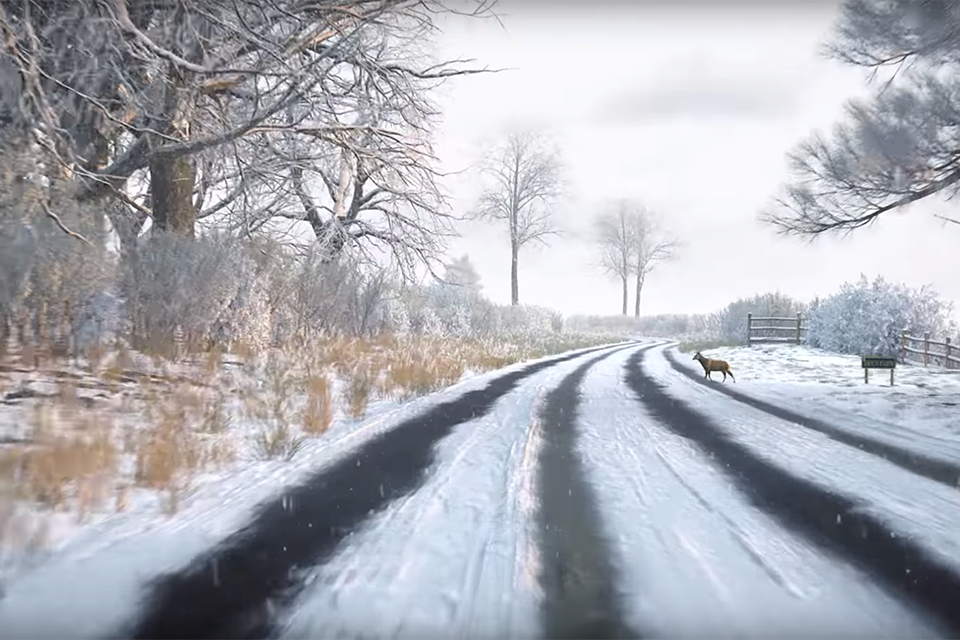History of road safety, The Highway Code and the driving test
Updated 22 February 2019
Applies to England, Scotland and Wales
1. Overview of road safety in Great Britain
Driver licences were first introduced in Britain by the Motor Car Act, 1903, purely as a means of identifying vehicles and their drivers.
All motor vehicles had to be registered, display registration marks and be licensed annually at a cost of 20 shillings (£1).
The fee for the first driving licence, which was obtained over the counter at Post Offices, was 5 shillings (25p).
Failure to sign your driving licence with your ‘ordinary signature’ could lead to a fine of up to £5.
In 1921 there were only 1 million drivers in Britain. By 1939 this figure had risen to 3 million. But it was only during the 1960s, when cars became more affordable, that motoring really took off.
In 1973 the number of drivers had risen to about 20 million and a centralised computer-based licensing system was brought in to cope with the huge increase in demand for both driver and vehicle licences.
2. The Highway Code
Hundreds of thousands of copies of The Highway Code are sold each year, ensuring that it never leaves the bestseller lists. It’s one of the few books in print that can lay claim to saving thousands of lives.
When it was first launched in 1931 there were just 2.3 million motor vehicles in Great Britain, yet over 7,000 people were killed in road accidents each year.
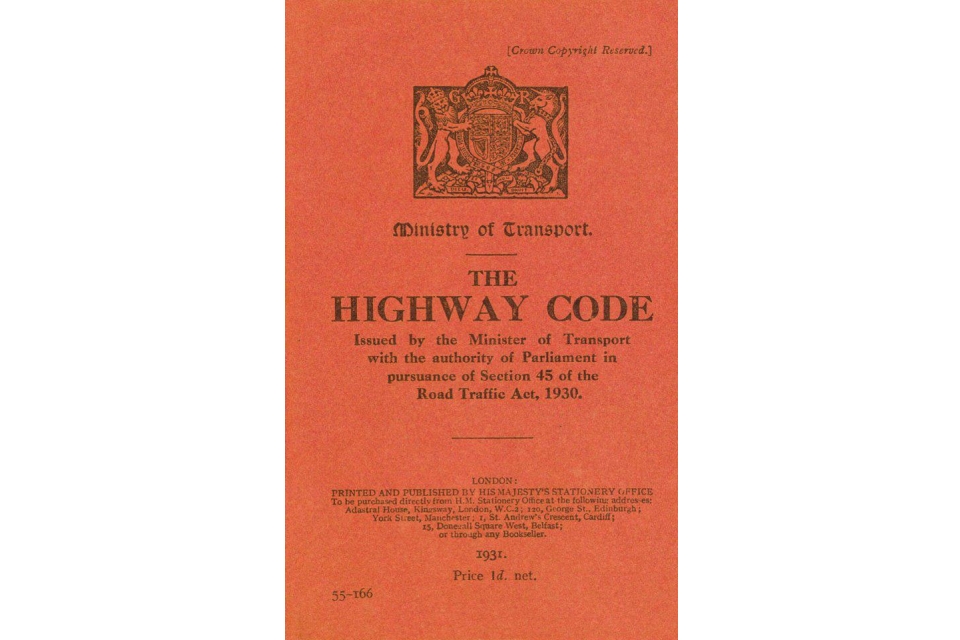
The Highway Code first edition.
Today there are more than 27 million vehicles on our roads but, thanks to greater public awareness, advances in technology and the introduction of British summer time, only half the number of road deaths occur.
Some things have not changed over the years: the very first edition of The Highway Code urged all road users to be careful and considerate towards others, putting safety first. However, other aspects of the code have changed considerably. For example, in 1931 mirrors were not even mentioned and drivers were advised to sound their horn when overtaking.
Nowadays, advice on how to cross the road fills a whole chapter, but in the early days it only merited a paragraph. More than a third of the original 24-page booklet described the various hand signals the police and road users should use, compared to the single page given to the subject in the current edition.
The first edition
The first edition was published in 1931, it:
- cost 1 old penny
- was the only one to carry advertisements, for the AA, The Autocar magazine, The Motorcycle magazine, Castrol Motor Oil, BP, Motor Union Insurance and the RAC
- contained 18 pages of advice, compared to 135 pages in the 2007 edition
- included advice to drivers of horse drawn vehicles to ‘rotate the whip above the head; then incline the whip to the right or left to show the direction in which the turn is to be made.’
Since those early days, regular revisions of the Code have reflected changes in technology and developments in traffic management and road safety.
Road signs
Diagrams of road signs - just 10 signs in all - were first seen in the second edition, as was a warning about the dangers of driving when affected by alcohol or fatigue.
Stopping distances
Stopping distances made their first appearance in the third edition, along with new sections giving hints on driving and cycling.
In colour
The 1954 Highway Code, complemented by brand new colour illustrations, gave over the back cover to first aid guidance, while the expanded traffic signs section contained the first triangular warning signs.
Motorways
The arrival of motorways in the late 1950s led to the inclusion, in the fifth edition, of a new section on motorway driving. It explained such things as how to use exit slip roads and advising drivers to avoid drowsiness by stretching their legs at the parking or service areas.
Photographs and 3D illustrations
By the sixth edition in 1968 photographs and 3D illustrations had been included to help make rules clear and the price had risen from 6 old pence to 1s 3d (6p). After decimalisation reprinted editions cost just 6 new pence.
Green Cross Code
The 70-page 1978 edition introduced the Green Cross Code for pedestrians and the new orange badges for people with a disability. Prompted by soaring car crime statistics, the amended version contained advice on vehicle security.
Theory test
The 1990s saw a new format taller booklet and the inclusion of a section geared to the new driving theory test, which in the current edition has now become part of the Code itself.
Getting social
In 2011 the Highway Code joined social networking websites Twitter and Facebook to share reminders of the rules of the road.
The Highway Code app
In May 2012 The Official Highway Code app for iPhone, iPod Touch and iPad was launched, priced £3.99.
3. Top 10 driving test facts
The driving test’s been going for 80 years. Here are the top 10 driving test facts:
- Mr Beere was the first person to pass the driving test in 1935: he paid the grand total of 7s 6d (37.5p) to take the test.
- There were no test centres in 1935 so you had to arrange to meet the examiner somewhere like a post office, train station or town hall.
- The test was suspended for the duration of World War 2 and didn’t resume until 1 November 1946.
- In 1975, candidates no longer had to demonstrate hand signals.
- The theory test was introduced in 1996, replacing questions about The Highway Code during the practical test.
- Driving was much more hazardous 80 years ago - 7,343 people were killed on Great Britain’s roads when only 2.4 million vehicles were in use - in 2008, 2,538 people were killed with 26.5 million vehicles on the road.
- Candidates could book their theory test online for the first time in December 2001.
- The pass rate in 1935 was 63% compared to 46% in 2009 .
- 1969 saw the first driving test set for an automatic vehicle.
- Since 1935 more than 46 million tests have been taken.
4. Development and timeline of British driving, road safety and driving tests
1888
The first recorded sale of a manufactured motor car was to Emile Roger of Paris, who bought a petrol-driven Benz.
1907
Cabs with meters began operating in London.
1930
Regulations introduced covering endorsements and fitness declaration. The Road Traffic Act 1930 introduces licensing system for public service vehicles (PSV). In the early days of motoring, one licence covered both cars and motorcycles use. Age restrictions and a form of driving tests brought in for disabled drivers. Full licences for disabled drivers valid for 1 year.
1931
PSV drivers could be required to take a test, at discretion of Traffic Commissioners. The first edition of the Highway Code was published including advice for motorcycle riders.
1934
Licences for lorry drivers were introduced on 16 February 1934 under the Road Traffic Act, 1934 - the licensing authority could require the applicant to submit to a practical test of their ability.
‘Belisha’ beacons provide advanced warning of new pedestrian crossings.
1935
Voluntary testing was introduced on 16 March 1935 by the Road Traffic Act 1934. This was done to avoid a rush of candidates when the test becomes compulsory.
Mr R Beere was the first person to pass the driving test, at a cost of 7s 6d (37.5p).
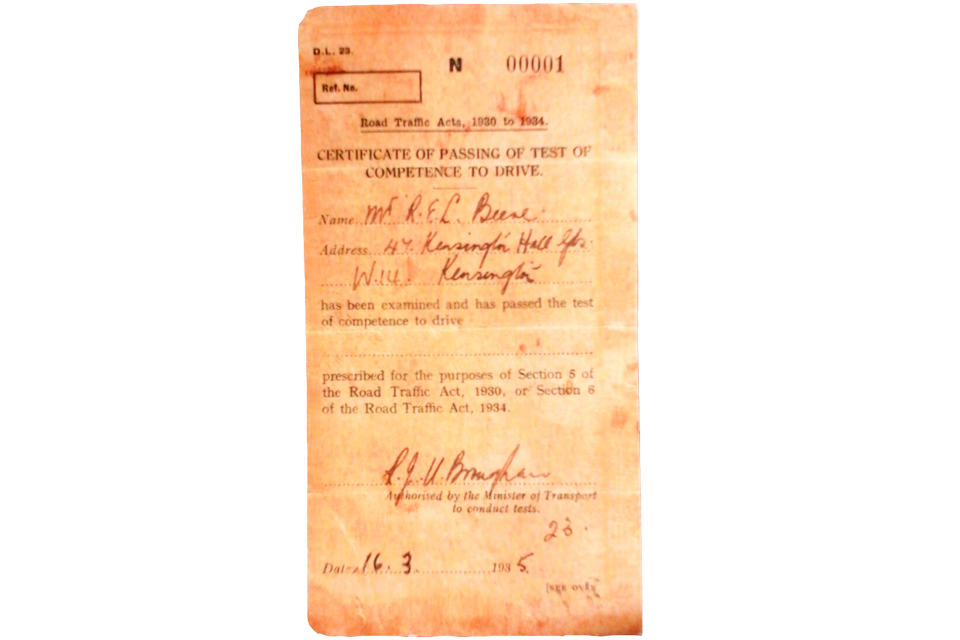
Mr R Beere's pass certificate (Photo above used with permission of M Beere).
Compulsory testing was brought in on 1 June 1935 for all drivers and riders who started driving on or after 1 April 1934:
- around 246,000 candidates applied
- the pass rate was 63%
- between 9 and 16 half-hour tests were conducted each day by 250 examiners
Those passing the motorcycling test did not need to take another test to drive a car. The test was conducted by the examiner positioning themselves at a point where they could observe the motorcyclist’s riding such as beside a common or in a city square.
In the case of sidecar outfits or three-wheelers, the examiner might have accompanied the rider.
Examiners were responsible for:
- handling the booking of driving tests
- they met candidates at pre-arranged locations such as car parks or railway stations because there were no test centres
Other road safety milestones included:
- anyone buying a driving licence must put ‘L’ plates on the car and eventually take a driving test to get their full licence
- a 30 miles per hour (mph) speed limit was introduced in urban areas
- windscreen wipers were used for the first time
1937
Speedometers and safety glass in windscreens were made compulsory on 1 January 1937.
Provisional licences were brought in for heavy goods vehicle (HGV) drivers.
1939
Driving tests were suspended on 2 September 1939 for the duration of World War 2. During the war, examiners were redeployed to traffic duties and supervision of fuel rationing.
1940
HGV licences and tests were suspended on 1 January 1940 because of World War 2.
1946
Testing resumed on 1 November 1946 following the end of World War 2 the previous year.
1947
The Motor Vehicles (Driving Licences) Regulations placed motorcyclists in their own licence group, but testing remained virtually unchanged until the 1960s.
On 18 February 1947, a period of 1 year was granted for wartime provisional licences to be converted into full licence without passing the test.
1950
The pass rate for the driving test was 50%.
1951
Zebra crossings were introduced.
1956
The test fee doubled from 10 shillings (50p) to £1 on 19 October 1956.
Testing was suspended from 24 November 1956 during the Suez Crisis. Learners were allowed to drive unaccompanied and examiners helped to administer petrol rations.
1957
Testing resumed on 15 April 1957 after the Suez Crisis.
Provisional licences were no longer stamped with ‘passed test’ from 15 July 1957.
The 3-year driving licence was introduced on 1 September 1957 under the Road Traffic Act 1956. The fee for a replacement licence, if lost or defaced, rises by 150% from 1 shilling (5p) to 2s 6d (12.5p).
1958
From 1 March 1958, provisional licences are valid for 6 months.
The M6 Preston bypass was the first stretch of motorway built in December 1958.
1959
A new examiner training facility was acquired at Stanmore training school, near Heathrow. Until then, examiners were trained ‘on the job’.
The M1 was officially opened on 2 November 1959. In the early days it had none of the following:
- speed limit
- central reservation
- crash barriers
- motorway lighting
1961
From 1 July 1961, learner riders were restricted to machines of no more than 250cc capacity in order to deal with the high number of motorcycling fatalities.
1962
From 1 April 1962, people who had held more than 7 provisional licences were required to take a driving test. If they failed to do so, the licensing authority could refuse a further application for a licence.
1963
The Road Traffic Act 1962 permitted riders to ride motorcycles of more than 250cc after passing their test. New grouping systems were introduced for driving tests and driving licences and a distinction was made between the test of competence and the test of fitness. Mopeds were placed in their own vehicle group for driving test purposes.
1964
A voluntary register of approved driving instructors (ADIs) was set up under the Road Traffic Act 1962. To become an ADI you had to pass stringent written and practical tests.
1965
Centralised licensing system was set up at new Swansea Driver and Vehicle Licensing Centre (DVLC), taking over licence issue from County/Borough councils.
The application form for a driving or motorcycle licence was revised from 1 May 1965. The medical standard for eyesight was changed. The distance from which a driving test candidate must be able read a number plate was changed to 67 feet for 3 1/8 inch high characters.
1967
On 10 May 1967, The Road Safety Act 1967 paved the way for regulations covering the licensing and testing of HGV drivers. The Driving and Motor Licences Division began promoting safe driving through film and TV ‘shorts’.
New drink-drive laws came into force on 8 October 1967. The legal limit was 80mg alcohol in 100ml blood.
1968
The test fee was increased to £1 and 15 shillings (£1.75p) on 2 July 1968.
1969
Changes to the driving test from 2 June 1969 included:
- vehicles used in the test must not have dual accelerator control unless this had been made inoperable
- a separate driving licence group for automatic vehicles was introduced
- candidates were required to produce their driving licence to the examiner at the test and sign the examiner’s attendance record - examiners could refuse to conduct a test if these requirements were not met
The Vehicle and Driver Licences Act introduced new regulations from 25 June 1969, including a licence fee increase and the specification of vehicle groupings for the purposes of driving tests.
An up-to-date scheme was introduced for licensing and testing new lorry drivers on 4 August 1969.
The first official driving manual was published in November 1969. Called ‘Driving - the Ministry of Transport Manual’, it was priced 12s 6d (62.5p).
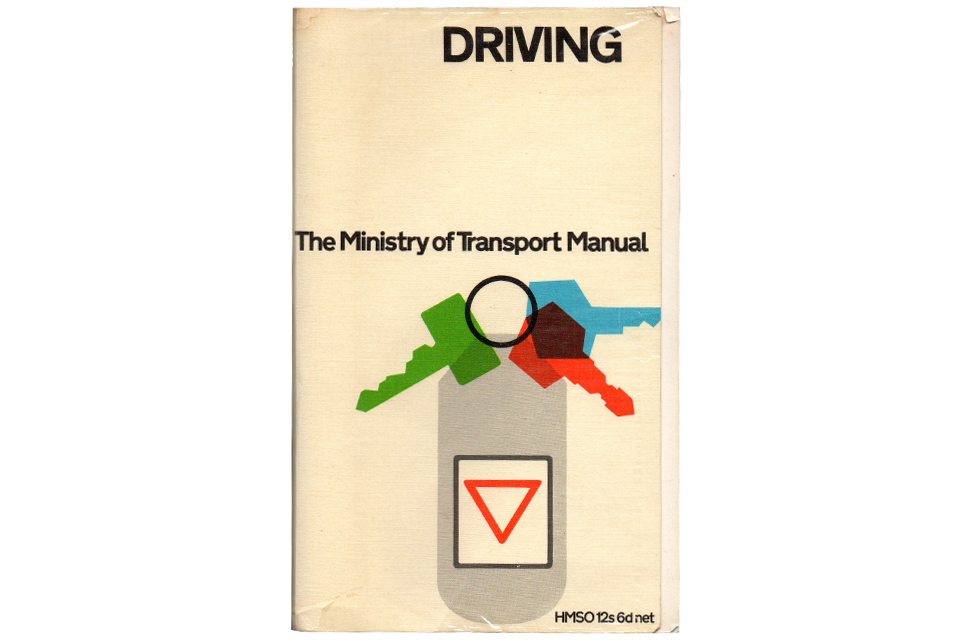
'Driving - The Ministry of Transport Manual'.
1970
All driving instructors now had to be officially registered. A total of 3,500 people are prosecuted for driving on a forged licence or wrongfully attempting to obtain a licence.
The new HGV test prompted a change in PSV testing. Previously, vehicle inspectors had carried out PSV driving tests: this was taken over by HGV qualified examiners.
1972
The demand for driving tests rose by 20% in 1972, and a further 15% in the following year, leading to a huge backlog of tests.
The minimum age for riders of motorbikes over 50cc was raised from 16 to 17 from 16 December 1972.
1973
Safety helmets were made compulsory for moped and motorcycle riders.
Computerised driving licences were issued from 1 March 1973, with green paper licences replacing the old-style red booklets. A full licence was still only valid for 3 years.
1975
Candidates no longer have to demonstrate arm signals in the driving test from May 1975.
1976
Full licences become valid until the age of 70 from 1 January 1976.
In July 1976, the Stanmore training school where examiners were trained was relocated to new premises at Cardington, Bedfordshire. Newly recruited ‘L’ test examiners had to undergo four weeks of training.
1977
The top speed for mopeds was set at 30mph.
1981
The government produced a 3 point package of changes:
- the maximum size of learner machines was reduced to 125cc
- provisional motorcycling licence entitlement was limited to 2 years
- a 2-part test was introduced with the intention of reducing accidents by steering learners to take training with approved organisations on suitable motorcycles - the first part of the test included some basic off-road motorcycle control exercises - usually conducted at large goods vehicle (LGV) centres - the second part included the usual on-road riding
1982
Provisional licences were extended until the age of 70 from 1 October 1982.
1985
PSV driving tests became compulsory in March 1985. Previously, Traffic Commissioners decided whether local applicants took the test.
1988
Driving tests were now conducted under the provisions of the Road Traffic Act 1988.
1989
A new accompanied motorcycle test was introduced on 1 October 1989. Prompted by alarming accident figures, the old-style ‘part 2’ motorcycle test, where the examiner stood by the roadside, was replaced by the new, more demanding ‘pursuit test’. The examiner now follows the candidate on a motorcycle and maintains radio contact during the test.
1990
The Driving Standards Agency (DSA) was created as an executive agency of the Department for Transport (DfT) on 1 April 1990. DVLC became an executive agency of DfT and was renamed the Driver and Vehicle Licensing Agency (DVLA).
Provisional licence holders were prevented from carrying pillion passengers, even if the passenger is a full licence holder. Compulsory basic training (CBT) was introduced for all new learner riders of motorcycles and mopeds. CBT comprises 5 elements including a minimum two-hour accompanied road ride. The course was designed to ensure new riders have a basic level of competence before they are allowed to ride on public roads displaying L plates and continue the learning process.
From 1 May 1990, examiners gave candidates a brief explanation of faults committed during the test, plus advice on areas for improvement.
Under new legislation, anyone accompanying a learner driver from October 1990 must be at least 21 and must have held a driving licence for a minimum of 3 years.
1995
The Pass Plus scheme was introduced in November 1995 to help newly qualified young drivers gain valuable driving experience and reduce the risk of them being involved in an accident.
1996
A separate written theory test was introduced on 1 July 1996. It replaced questions asked about The Highway Code during the driving test. Candidates now have to produce their driving licence for their test.
The theory test pass mark was raised from 26/35 to 30/35 on 1 October 1996.
1997
Introduction of additional licence categories and tests for learners aged over 21 years riding larger motorcycles (Direct Access Scheme) and small motorcycles.
New riders under 21 years restricted to riding machines of 125cc whilst learning. Once they pass the test they were then restricted to riding machines of 25kw (33bhp) for two years. After this period they could ride any size of motorcycle.
New licence and test changes on 1 January 1997 included:
- a new test category was created for a car with large trailer (B+E)
- licence categories and tests were introduced for Direct Access and small motorcycles
- the written theory test was introduced for LGV and PCV drivers
Photographic ID was required for both practical and theory tests from 1 March 1997.
From 1 June 1997, if a new driver gained 6 or more penalty points during the first 2 years of driving, they lost their licence and must retake both the theory and practical driving test before being allowed back on the roads.
On 29 September 1997, waiting times between tests were reintroduced for unsuccessful candidates:
- for car drivers and motorcycle riders, the minimum wait of 10 days between tests of the same category
- for lorry and bus driver testing, a minimum wait of 3 days between tests of the same category
1999
The newly revised Highway Code was published in February 1999, with current advice and up-to-date legislation for all road users.
From 6 April 1999, cars being used for a driving test must have a front passenger seat belt, head restraint and rear-view mirror.
Changes to the driving test on 4 May 1999 included extending the length of the test, randomising the emergency stop manoeuvre and failing candidates for committing 16 or more driving faults.
Photocard licences were introduced from 1 July 1999 for both first time issues and licence renewals.
2000
The touch-screen theory test was introduced on 4 January 2000.
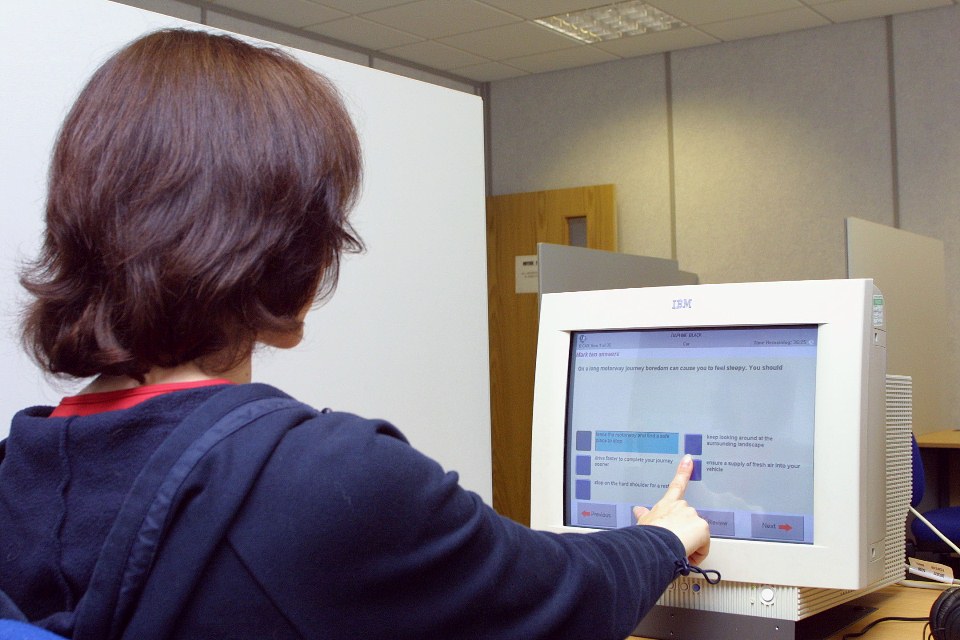
The touch-screen theory test was introduced in 2000.
2001
Drivers getting a full car licence from 1 February 2001 must now pass compulsory basic training (CBT) before being allowed to ride a moped.
Various changes to the motorcycle training regulations were introduced, including the:
- reduction of the validity period for a CBT certificate from 3 to 2 years
- removal of the ‘2 year on, 1 year off’ rule for provisional licence holders
- requirement for drivers gaining a full car licence to take CBT before being able to ride a moped
Candidates could book their theory test via the internet from 19 December 2001.
2002
A hazard perception element was introduced into the car and motorcycle theory test; this uses video clips to test candidates’ awareness of hazards on the road.
2003
‘Show me’ and ‘tell me’ vehicle safety questions were added to the beginning of the driving test on 1 September 2003.
Candidates could book their practical test on the internet for the first time from 24 October 2003.
2006
The enhanced rider scheme for motorcyclists was launched in November 2006.
2007
The register of post-test motorcycle training (RPMT) was introduced in February 2007.
The number of questions in car and motorcycle theory test changed from 35 to 50 on 3 September 2007 - the pass rate became 43 out of 50.
The 2007 edition of The Highway Code was published.
2008
An assessment of eco-safe driving was introduced in the driving test in September 2008.
The Driver Certificate of Professional Competence (CPC) was introduced for professional bus and coach drivers on 10 September 2008.
2009
A new 2-part modular motorcycle test was introduced on 27 April 2009. It enabled the UK to comply with the EU Second Directive requiring new and more demanding manoeuvres to be tested:
- module 1 contains the specified manoeuvres element of the test which is conducted off-road. It includes exercises designed to assess the rider’s ability to control their machine safely, including avoidance and emergency stop exercises
- module 2 includes an eyesight test and 30 minutes of on-road riding, assessing the rider’s ability to safely interact with other road users.
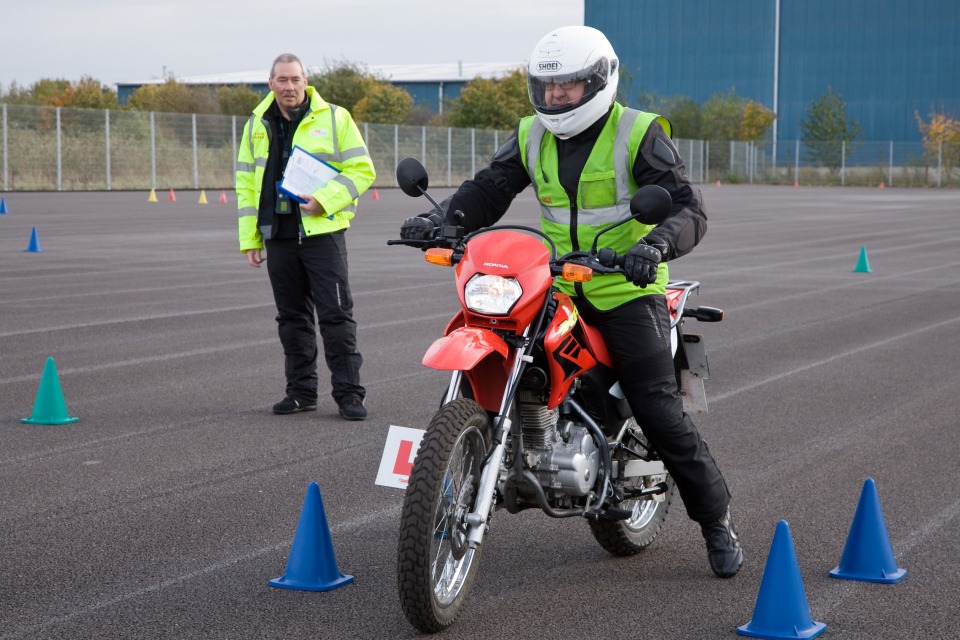
A new 2-part modular motorcycle test was introduced on 27 April 2009.
Driver CPC for lorry drivers was introduced on 10 September 2009.
A case study was introduced into the theory test on 28 September 2009.
2010
From 6 April 2010, driving test candidates have been encouraged to take their instructor with them on their test.
‘Independent driving’ became part of the practical driving test on 4 October 2010. Candidates have to drive for 10 minutes making their own decisions.
2011
A new case study was introduced into the theory test in September 2011.
2013
New rules affecting motorcyclists in Great Britain were introduced on 19 January 2013. They included changes to motorcycles you can ride and the age you have to be to ride them.
2014
DSA and the Vehicle and Operator Services Agency (VOSA) merged to create the Driver and Vehicle Standards Agency (DVSA) on 2 April 2014. DVSA is an executive agency of the Department for Transport.
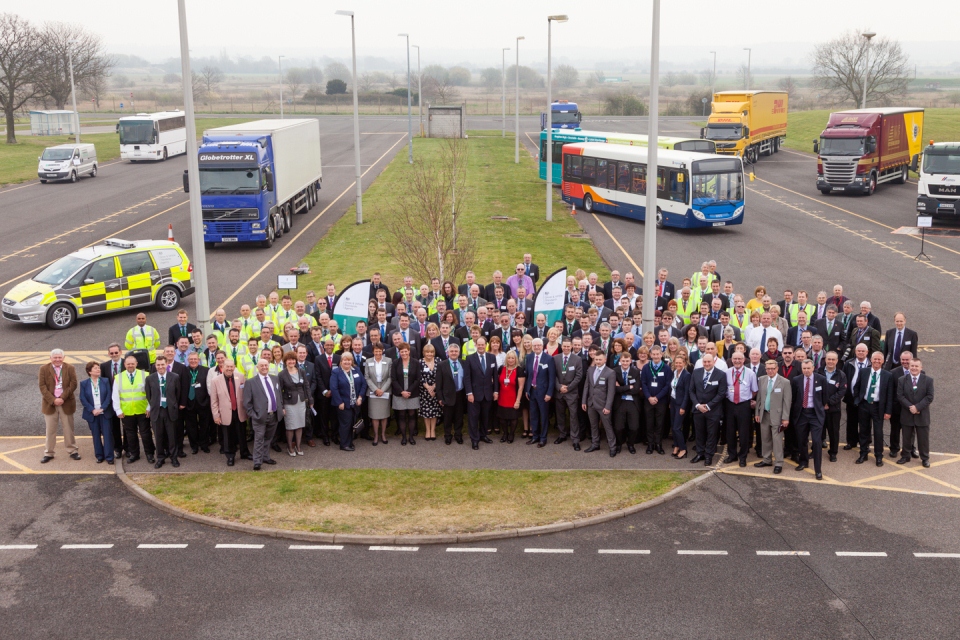
The launch of the Driver and Vehicle Standards Agency in April 2014.
On 7 April 2014, driving test candidates were stopped from being able to use foreign language voiceovers and interpreters on their theory and practical driving tests. The change was made to cut out the risk of fraud, and to make sure that all drivers can read road signs and fully understand the rules of the road.
The ADI check test was replaced by the ADI standards check on 7 April 2014. This assesses the ADI’s ability to instruct and whether their instruction helps a person to learn in an effective way. At the same time, a new grading system for ADIs was introduced.
2015
New computer-generated imagery (CGI) clips replaced old filmed clips in the hazard perception part of the theory test on 12 January 2015.
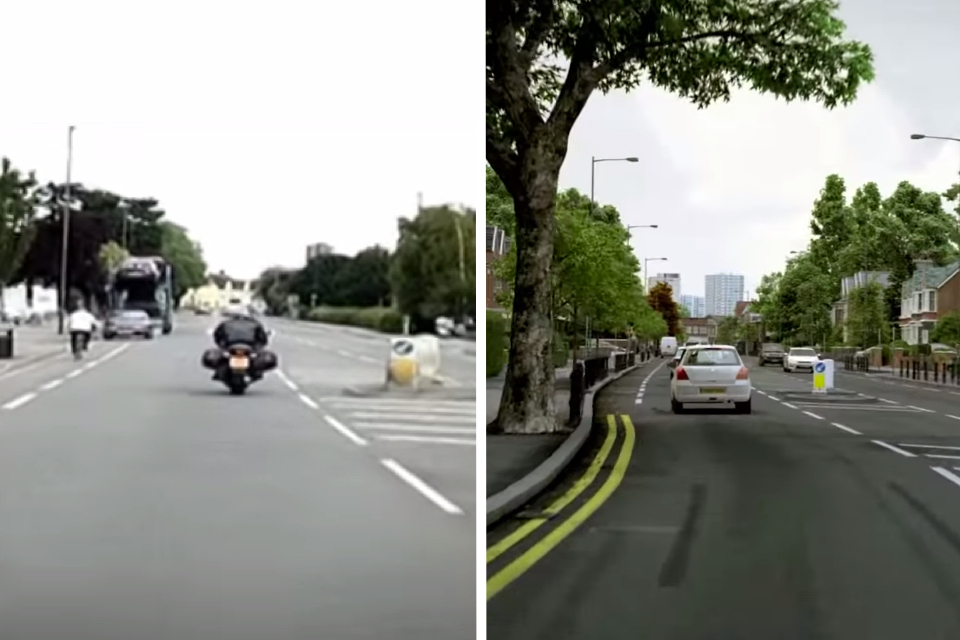
An old-style video clip (left) and an updated CGI clip (right).
2017
The way the car driving test works changed on 4 December 2017 to include following directions from a sat nav, testing different manoeuvres and answering a ‘show me’ safety question while driving.
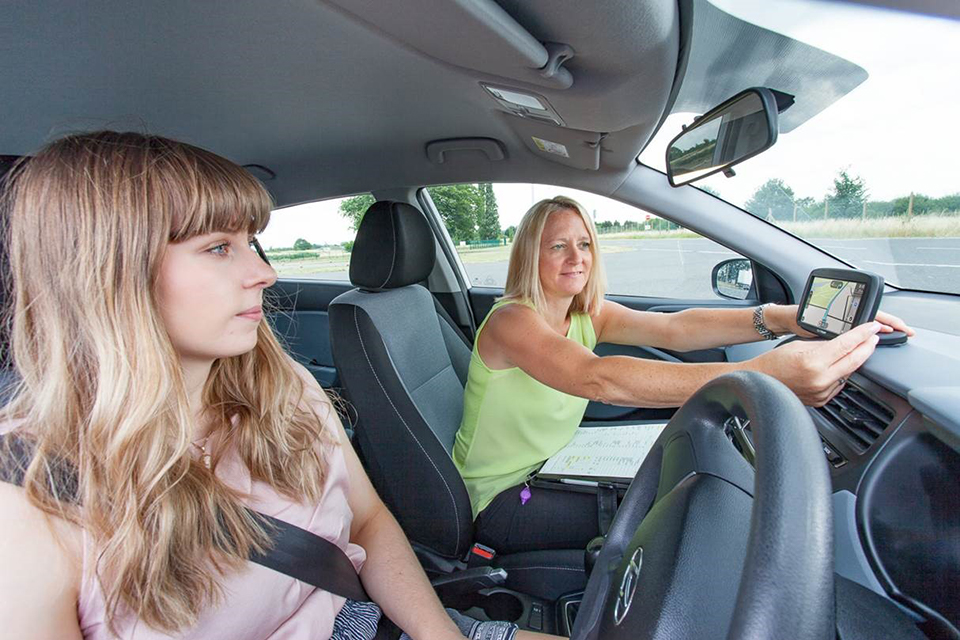
Driving test candidates had to start following directions from a sat nav from 4 December 2017.
Two of the 3 tests people take to qualify as an ADI were improved on 23 December 2017. The ADI part 2 (driving ability) test changed to reflect the changes made to the car driving test on 4 December 2017. The ADI part 3 (instructional ability) test changed to become a much more realistic assessment of a trainee instructor’s ability to teach a pupil.
2018
On 4 June 2018, learner drivers were allowed to take motorway driving lessons for the first time. They have to be with an ADI and driving a car with dual controls. The change in law was made to help make sure more drivers know how to use motorways safely.
From November 2018, the hazard perception part of the theory test started to include video clips to test a learner driver’s ability to spot developing hazards in different weather conditions.
